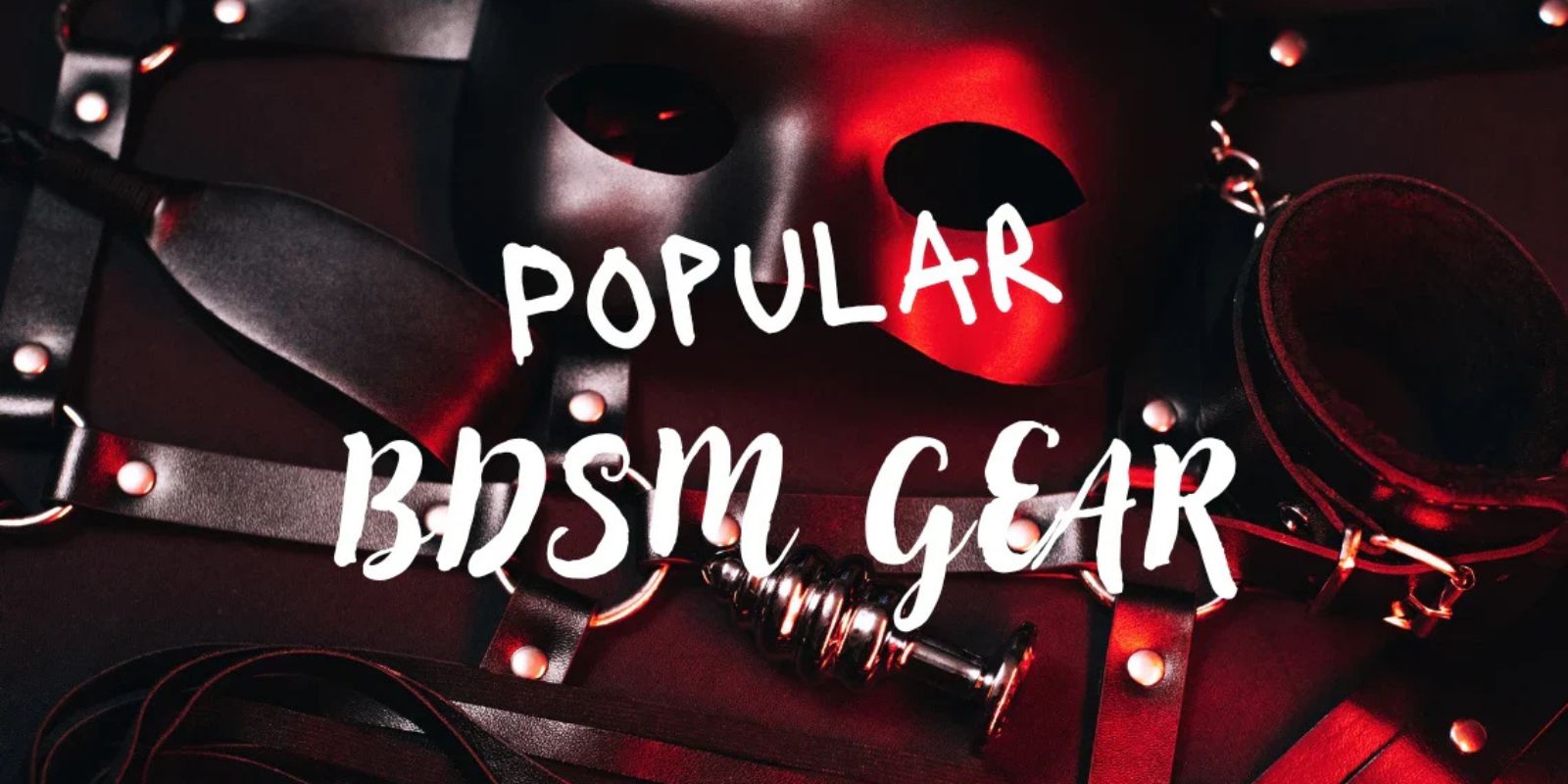BDSM Pleasure — Facts, Roles, and Community Insights
BDSM is an acronym that describes various aspects of erotic practices where people derive BDSM pleasure. It stands for bondage and discipline, dominance and submission, sadism and masochism. These consensual acts are practiced between adults who agree to explore power, sensation, and intimacy — sometimes blending pleasure with pain.
Table of Contents
- Amazing BDSM Facts That You Should Know
- There Is Nothing Wrong with You if You Like BDSM
- BDSM Requires Research
- There Are Dominants, Submissives, Tops and Bottoms
- BDSM Is a Community
- BDSM Pleasure
- FAQ
BDSM pleasure refers to the physical, emotional, and psychological satisfaction that people experience through consensual BDSM activities — including bondage, discipline, dominance, submission, sadism, and masochism. Unlike abuse, BDSM is built on mutual trust, communication, and negotiated boundaries. For many, the pleasure comes not only from sensation or role-play but also from intimacy, power exchange, and the freedom to explore desires in a safe, consensual framework.

Amazing BDSM Facts That You Should Know
Millions of people worldwide are curious about BDSM, but many lack reliable information before diving in. Research shows that BDSM practitioners are not psychologically damaged; in fact, they often report equal or higher levels of well-being compared to the general population. Consent and negotiation form the backbone of BDSM, with safe words and nonverbal signals helping to keep play secure and enjoyable. Many people also identify as “switches,” enjoying both dominant and submissive roles depending on mood or partner. Aftercare is an essential step, allowing partners to reconnect emotionally and physically after intense scenes.
Another fascinating fact about BDSM is that it can actually reduce stress and promote overall well-being. Studies have found that engaging in consensual BDSM can lower cortisol levels, increase endorphins, and even create a meditative state of focus and presence. For many, scenes provide an escape from daily pressures, offering a safe space to release tension and immerse themselves in trust, vulnerability, and pleasure. Far from being harmful, these experiences often leave participants feeling calmer, happier, and more connected to themselves and their partners.
There Is Nothing Wrong with You if You Like BDSM
Liking BDSM doesn’t mean there’s something “broken” or abnormal about you—it simply reflects your unique desires and preferences. Just as some people enjoy gentle romance while others crave more intensity, BDSM is one of many valid ways to explore sexuality. Studies show that BDSM enthusiasts are just as healthy, emotionally stable, and capable of love as anyone else. What matters most is mutual consent, respect, and communication. When approached with care, BDSM can strengthen intimacy, build trust, and provide a powerful sense of freedom and self-expression.
BDSM Requires Research
While some BDSM acts are easy to try, more advanced play — such as rope bondage or impact play — requires preparation. Research is crucial to avoid harm and maximize pleasure. Books, online classes, and BDSM workshops offer practical tips, safety insights, and inspiration. Resources will also teach you how to reduce risks, use sex toys safely, and practice aftercare. Doing your homework ensures BDSM remains safe, sane, and consensual.
There Are Dominants, Submissives, Tops and Bottoms
In BDSM, people often identify with specific roles, each reflecting how they prefer to give or receive power, control, and sensation. Dominants enjoy taking the lead, guiding or controlling a scene, while submissives find pleasure in yielding, following, or being guided. Tops focus on performing the physical actions — such as spanking, tying, or teasing — without necessarily holding power over the dynamic, whereas bottoms are the ones receiving those actions. These roles can overlap or shift, and many individuals identify as switches, enjoying different roles depending on mood, context, or partner. Understanding these distinctions helps partners communicate their preferences more clearly and co-create experiences that feel safe, consensual, and fulfilling.
- Top: The person who gives sensation, control, or pain — often linked to the dominant role.
- Bottom: The one who receives sensation, submits, or enjoys being controlled.
Some players switch between roles depending on mood or partner. Whether top, bottom, dominant, or submissive, the key is enthusiastic consent and mutual satisfaction.
BDSM Is a Community
BDSM isn’t just an activity — it’s a global community. Many enjoy it privately at home, but others attend munches, workshops, or kink events to meet like-minded people. These safe spaces allow beginners and veterans alike to exchange knowledge, share fantasies, and celebrate sexuality.
BDSM as a community goes beyond play—it offers education, support, and belonging. Local and online groups provide opportunities to learn about safety, etiquette, and techniques, while also helping newcomers connect with trustworthy partners. Many communities emphasize inclusivity, ensuring people of different orientations, genders, and experience levels feel welcome. By engaging with the community, individuals not only expand their skills and confidence but also gain a sense of acceptance, validation, and friendship that reinforces BDSM as a healthy, social, and empowering part of life.
BDSM Pleasure
BDSM pleasure isn’t only about physical sensation—it also engages the mind and emotions, creating layered experiences of excitement, vulnerability, and connection. The anticipation, role play, and power exchange can heighten arousal and make orgasms more intense. For some, BDSM also offers a sense of release or catharsis, allowing them to let go of stress and feel renewed closeness with their partner. When approached responsibly, it transforms intimacy into a blend of passion, creativity, and emotional depth, making pleasure not just stronger but also more meaningful.
FAQ
Is it normal to enjoy BDSM?
Yes. BDSM is simply one expression of human sexuality. As long as it’s consensual, it’s normal and healthy.
Do I need special tools to start?
No. Many people start with simple acts like light spanking, dirty talk, or role play before trying advanced toys or bondage gear.
Is BDSM safe?
Yes, if practiced responsibly. Follow the principles of “Safe, Sane, and Consensual” and always communicate with your partner.
Can BDSM improve relationships?
Absolutely. For many couples, BDSM deepens trust, communication, and intimacy, making their bond stronger.
Unlocking BDSM Pleasure in Your Journey
Exploring BDSM is not about being “broken” or “different” — it’s about embracing your desires and communicating them with your partner. By learning the facts, respecting boundaries, and joining supportive communities, you can transform BDSM into a safe, empowering, and intensely pleasurable part of your sex life.




You must be logged in to post a comment.